What Is Link Cloaking in Affiliate Marketing + 6 Easy Steps to Do It
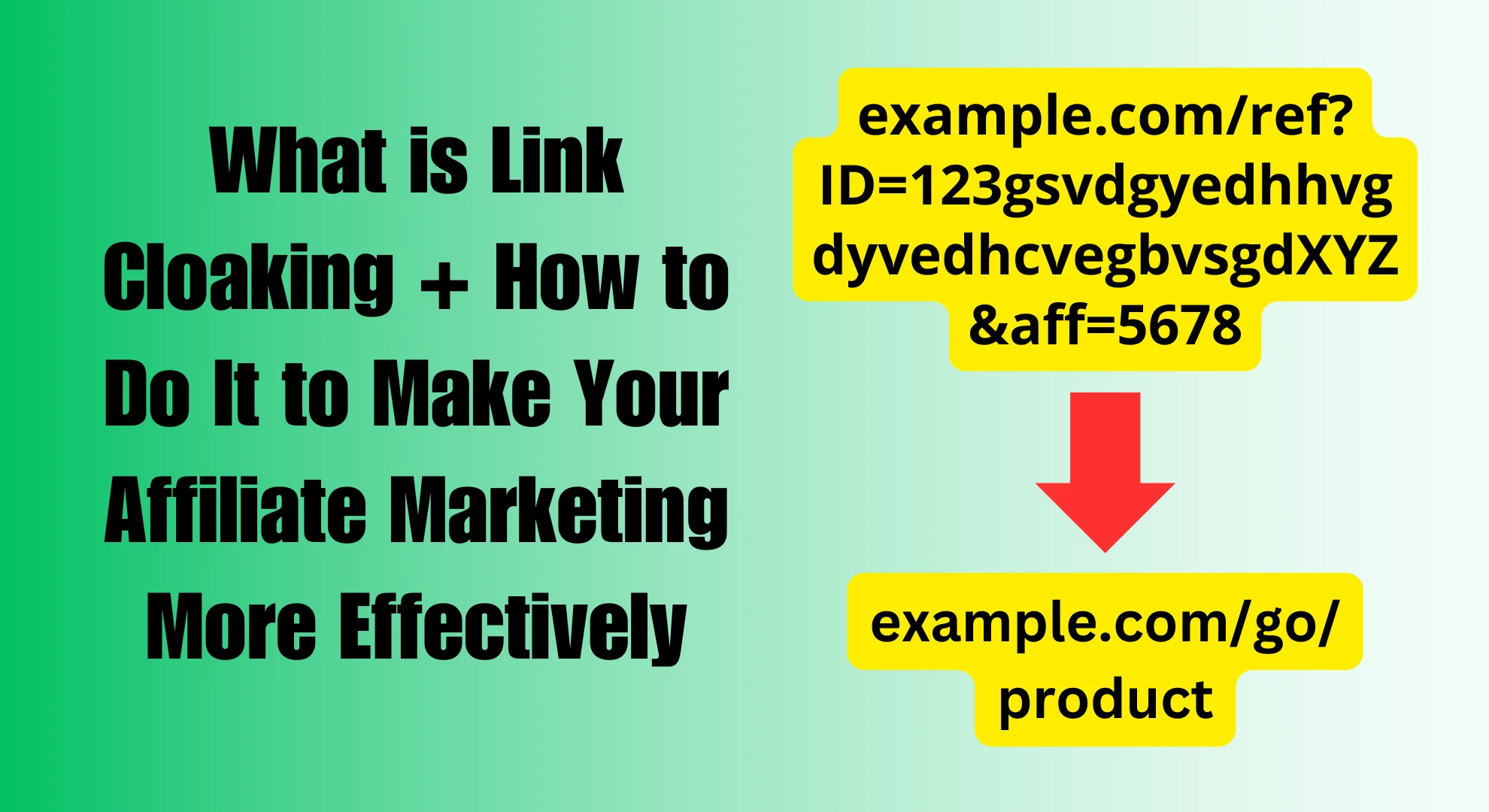
Affiliate links are how you get paid in affiliate marketing. You promote a product, someone clicks your link, makes a purchase, and you earn a commission. Simple, right? Well, not always.
The problem is that some affiliate links can be long, ugly, and stuffed with random characters. Some look so sketchy that people won’t even touch them.
A cluttered link like example.com/ref?ID=123XYZ&aff=5678 screams “spam”, while a clean, branded link like yourwebsite.com/recommend/product looks professional and trustworthy. Which one would you rather click?
That’s where link cloaking comes in. It transforms those messy links into short, polished URLs that people actually want to click.
Not only does this build trust, but it also makes your links easier to share, track, and manage. Plus, it protects your commissions from shady tactics like link hijacking.
In this guide, I’ll break down what link cloaking is, how to do it, and why it’s a must for affiliate marketers. If you’re serious about boosting clicks and conversions, this is something you can’t ignore. Let’s get into it.
Key Takeaways
- Cloaking turns messy affiliate links into clean, branded ones that look more trustworthy and get more clicks.
- A short, professional link from your domain appears safer than a long, random affiliate URL.
- Managing cloaked links is easier since everything stays organized in one dashboard.
- Cloaking helps protect commissions by preventing users from removing affiliate IDs.
- It works with tracking tools, so you can still monitor clicks and performance.
- Some affiliate programs don’t allow cloaking, so always check the rules first.
What Is Link Cloaking?
In simple terms, link cloaking is a way to shorten and brand affiliate links, making them look cleaner and more trustworthy. Instead of a long, confusing URL filled with tracking parameters, you get a simple, branded link that’s easy to share.
For example:
- Non-Cloaked Link:
https://example.com/ref?affid=12345GFDUywjhskfdujeh6 - Cloaked Link:
https://yourwebsite.com/recommended-product
The first one looks spammy. The second one looks professional. That’s the power of link cloaking.
It does more than just make links look nice. It helps with trust, branding, and even tracking. When people see a link from your domain, they’re more likely to click. Plus, you get better control over your affiliate links, making it easier to manage them all in one place.
Cloaking links is all about making your links work better for you.
Here is an example of one of my cloaked links:
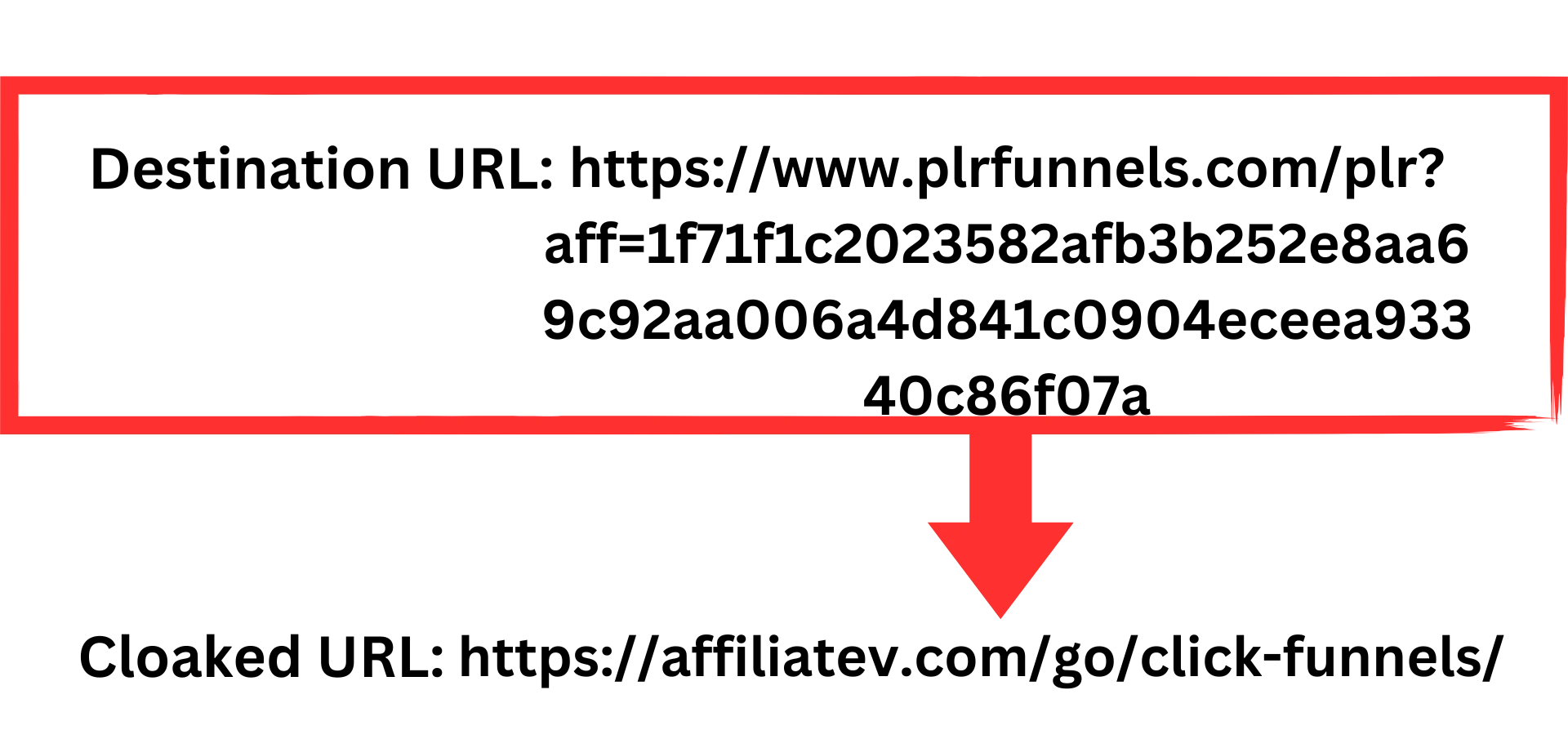
Why Do Affiliate Marketers Use Link Cloaking?
If you’re in affiliate marketing, you know that every click matters. But long, ugly affiliate links can hurt your conversions and even cost you commissions. That’s where link cloaking helps. Let’s break down why it’s a must-have tool.
1. Improves Click-Through Rates (CTR)
Imagine you’re about to buy something online. You hover over a link and see this:
👉 https://example.com/ref?affid=123456&trackingID=xyz&campaign=9087
Looks sketchy, right? Many people hesitate to click links that look random or overly complicated. Cloaking turns that into something clean and branded, like this:
👉 https://yourwebsite.com/recommended-product
A short, trustworthy link makes a big difference. When people feel safe clicking, your CTR goes up. More clicks mean more chances to earn.
2. Protects Commissions
Some people don’t realize this, but there are sneaky ways to lose commissions. Let’s say someone clicks your affiliate link but removes the tracking ID before buying. You just lost a sale.
Even worse, some bad actors hijack affiliate links, replacing your ID with theirs. That’s free money for them and a huge loss for you. Cloaked links hide your affiliate details, making it harder for anyone to tamper with them.
3. Makes Links Easier to Manage
If you’re promoting multiple products, keeping track of all those long URLs is a nightmare.
What happens if a brand updates its affiliate program and changes your link? Without cloaking, you’d have to dig through every page and email to replace it.
With a cloaking tool, you update the link in one place, and it updates everywhere. That’s a huge time saver, especially when running multiple campaigns.
4. Tracks Performance
You can’t improve what you don’t track. Cloaked links work seamlessly with tracking tools, letting you see how each link performs. You’ll know:
- Which links get the most clicks
- Which pages drive the most conversions
- How traffic sources compare
This data helps you tweak your strategy, focusing on what works and cutting what doesn’t.
5. Bypasses Ad Blockers
Many ad blockers are aggressive and automatically hide affiliate links. If your link gets blocked, you lose potential commissions.
Cloaked links, especially those using your own domain, often slip past these blockers. Since they don’t look like traditional affiliate links, they’re less likely to get flagged. That means more visibility and more opportunities to convert clicks into sales.
Therefore, link cloaking isn’t only about making links pretty—it’s about protecting your earnings, improving trust, and simplifying your workflow. If you’re not cloaking your links yet, you’re probably leaving money on the table.
Is Link Cloaking Allowed?
Short answer: It depends. Some affiliate programs are fine with link cloaking, while others strictly forbid it. That’s why you have to check the rules before doing anything.
Amazon Associates & Other Strict Programs
Amazon Associates is the biggest example of a “no cloaking” policy. They want full transparency, meaning your links must show Amazon’s original URL. If you try to cloak them, you risk getting banned from the program.

Other networks, especially big-name retailers, may have similar policies. Some want their brand name visible in the link for trust reasons. Others track their own clicks and don’t want interference.
Read the Terms Before Cloaking
Don’t assume cloaking is allowed everywhere. Always check the affiliate program’s terms. Look for rules about:
- Link cloaking and redirects
- Allowed tracking methods
- Permitted link formats
If a program explicitly forbids cloaking, don’t risk it. Losing an account over a small mistake isn’t worth it.
Alternatives for Restricted Programs
If you can’t cloak links, there are other ways to make them look cleaner without breaking the rules:
- Shortened Links – Some programs let you use their own shorteners. Amazon has “amzn.to”, which looks better than their long URLs.
- Redirect Pages – Instead of cloaking, send users to a landing page on your site. From there, they can click the real affiliate link.
- Anchor Text Links – Use natural text links instead of showing the raw URL. Example: “Check out this deal on Amazon” instead of pasting the full link.
My Recommendations
Link cloaking works great for most programs, but not all. Always check the rules first. If cloaking isn’t allowed, use workarounds that keep things clean without breaking any rules.
How to Cloak Affiliate Links Using ThirstyAffiliates (Step-by-Step Guide)
For WordPress users, ThirstyAffiliates is one of the best tools for cloaking affiliate links. It’s built specifically for affiliate marketers, making it easy to manage, organize, and track links—all from your WordPress dashboard.
Let’s walk through the exact steps to cloak your links using ThirstyAffiliates.
Step 1: Install and Activate ThirstyAffiliates
- Log in to your WordPress dashboard.
- Go to Plugins > Add New.
- Search for ThirstyAffiliates.
- Click Install Now, then Activate.


Once activated, you’ll see a new ThirstyAffiliates menu on your dashboard.

Step 2: Configure the Basic Settings
Before adding links, set up the plugin properly.
- Go to ThirstyAffiliates > Settings.
- Under Link Appearance, choose a base prefix for your cloaked links. Options include:
/go//recommend//refer/
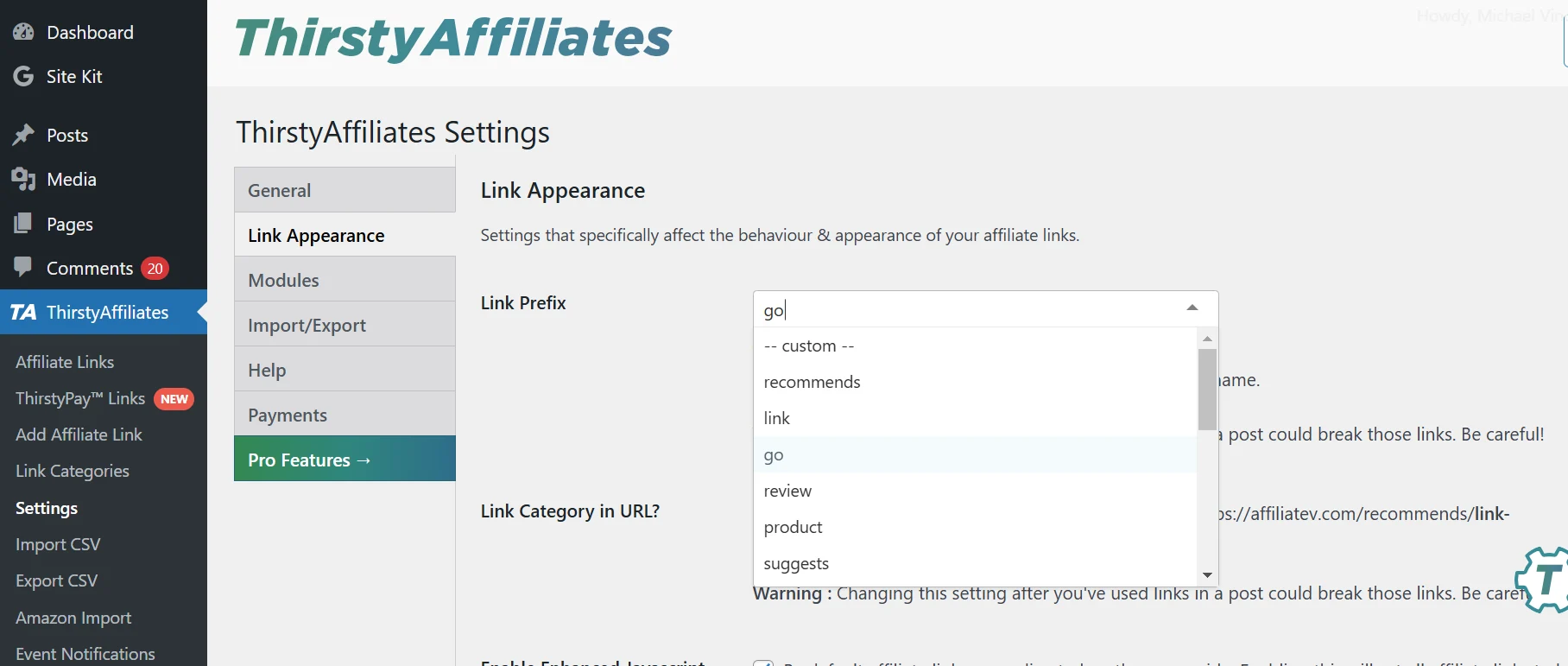
For example, if you set it to /go/, your cloaked link will look like this:https://yourwebsite.com/go/product-name
- Enable Link Categorization if you want to organize your links.
- Click Save Changes.
Step 3: Add a New Cloaked Link
- Go to ThirstyAffiliates > Add New Link.
- Enter a Title (use the product or service name).
- Paste your raw affiliate link into the Destination URL field.
- Choose a Link Category (optional but helps with organization).
- Click Save Link.
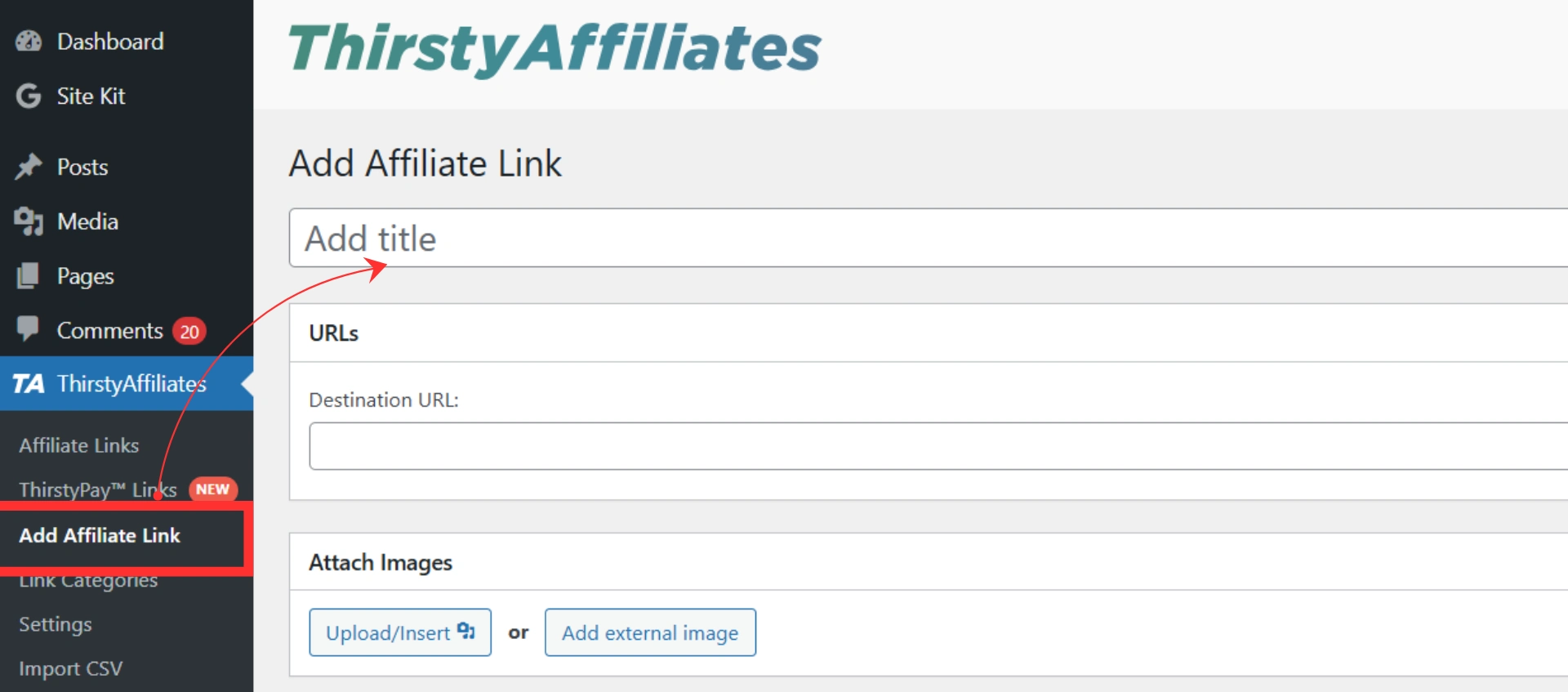
At this point, ThirstyAffiliates has automatically cloaked the link, but let’s refine it further.
Step 4: Customize the Cloaked URL
- Scroll down to the Cloaked URL and edit the slug (the part after
/go/). - Keep it short and recognizable.
- Good:
/go/bluehost - Bad:
/go/xh12p-aff-xyz
- Good:
- Click Save Link.
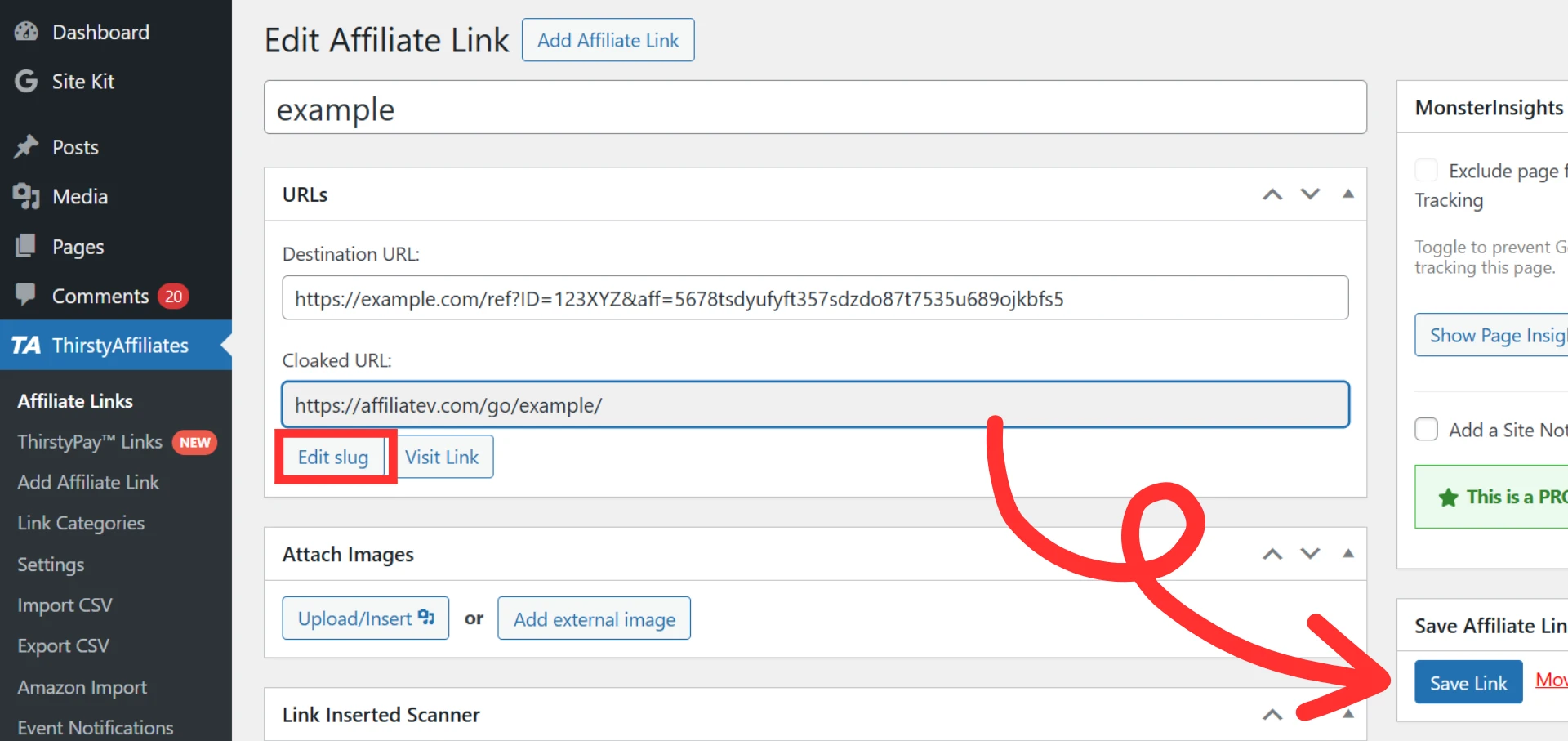
Now, instead of sharing a long, ugly affiliate link, you have a clean, professional one.
Step 5: Insert the Cloaked Link in Your Content
There are multiple ways to use your cloaked link in WordPress:
- Manual Method: Copy the cloaked link and paste it directly into your blog posts, emails, or social media.
- ThirstyAffiliates Button: In the WordPress editor, click the ThirstyAffiliates icon, search for the link, and insert it instantly.

- Auto-Linking Feature: This automatically replaces keywords in your content with your cloaked affiliate link. Go to ThirstyAffiliates > Auto-Linker, add keywords, and save.
This feature is useful if you frequently mention a product in your content.
Step 6: Track Performance and Optimize
- Go to ThirstyAffiliates > Reports.
- Check click-through rates to see how many people are clicking your links.
- Identify your best-performing links and optimize underperforming ones.
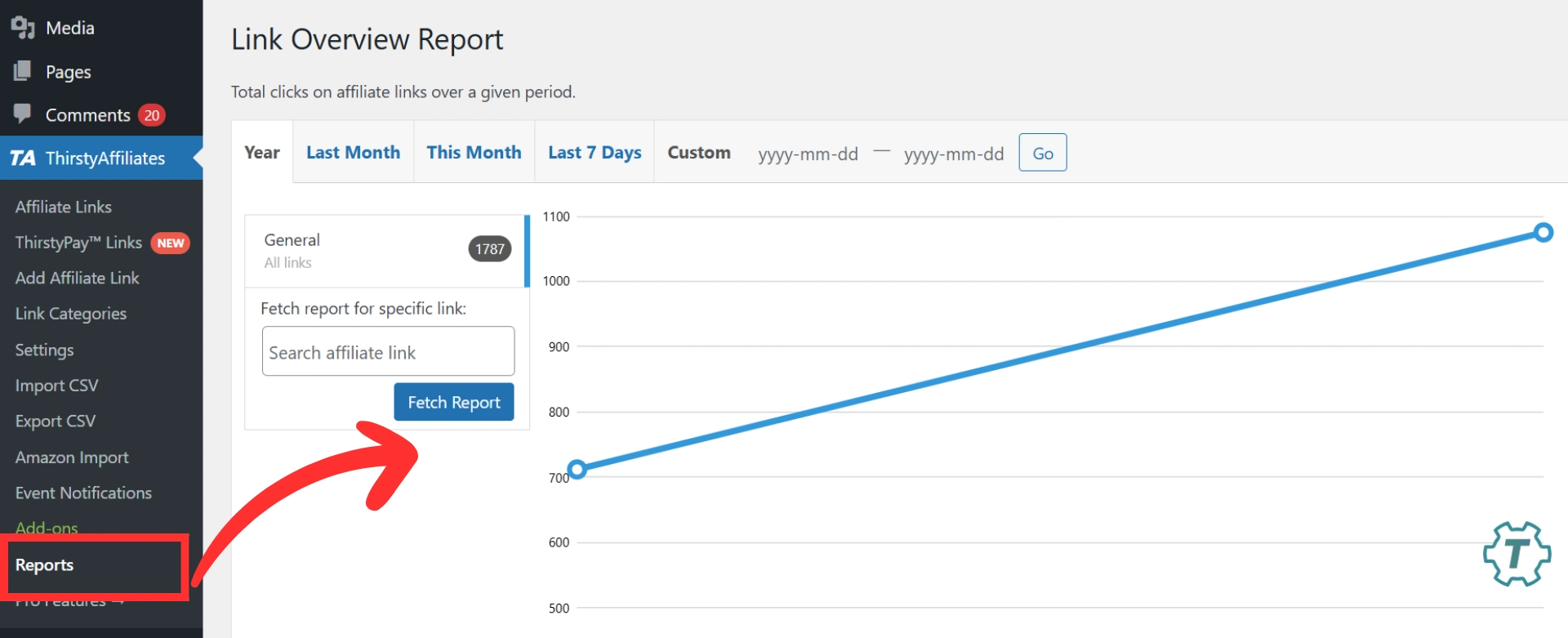
If a link isn’t getting clicks, try changing its placement, CTA, or wording.
Cloaking your affiliate links with ThirstyAffiliates makes them cleaner, safer, and easier to manage. It also protects your commissions and improves tracking. If you’re running a WordPress-based affiliate site, this is a must-have tool.
Now that your links are set up properly, you can focus on driving more traffic and increasing conversions.
Best Tools for Link Cloaking
Apart from ThirstyAffiliates, which I covered in the tutorial, there are other link cloaking tools I’d recommend. Each has its strengths depending on what you need. Let’s go through them.
1. Pretty Links – Simple & Effective WordPress Plugin
If you’re using WordPress and want a quick and easy way to cloak links, Pretty Links is a great choice. You can create clean, branded URLs straight from your dashboard.
- Great for: Bloggers and content creators who want a simple solution.
- What I like: Easy link management and basic tracking without extra software.
- What to watch out for: The free version has limited tracking, so serious marketers might need the Pro version.
Example cloaked link with Pretty Links:https://yourwebsite.com/go/product-name
2. ClickMagick – Advanced Tracking & Optimization
ClickMagick is more than just a cloaking tool—it’s a complete tracking system. If you need deep analytics on how your links perform, this is one of the best options.
- Great for: Marketers running paid ads or testing multiple traffic sources.
- What I like: It filters bot traffic, tracks conversions, and gives detailed insights.
- What to watch out for: It has a monthly fee and a learning curve for beginners.
If you’re running serious affiliate campaigns, ClickMagick is worth considering.
3. Bitly – Basic Link Shortening & Tracking
Bitly is a well-known link shortener that’s simple and free. It’s not made for affiliate marketing, but it works if you need a clean, trackable link.
- Great for: Social media marketers and casual affiliate marketers.
- What I like: Free, easy to use, and works for any link.
- What to watch out for: No advanced tracking or conversion data.
This is for those who just need a quick and free solution, Bitly does the job. But if you’re serious about tracking, you’ll want something more advanced.
My Recommendations
The best tool depends on your needs. You want something simple? Go with Pretty Links. If you’re deep into affiliate marketing, ThirstyAffiliates is built for you. For serious tracking and optimization, ClickMagick is the winner. And if you just need a basic shortener, Bitly does the job.
Pick the one that fits your workflow and start cloaking your links the right way.
Conclusion
Link cloaking is a smart move for affiliate marketers. It makes long, ugly links clean and professional, builds trust, and improves click-through rates. More importantly, it helps protect your commissions from hijacking and ensures you’re in control of your links.
Setting it up isn’t complicated. With the right tool, like ThirstyAffiliates, you can shorten and brand your links in minutes. Just follow the six steps I covered, test your cloaked links, and track their performance.
That said, not every affiliate program allows cloaking. Some, like Amazon Associates, have strict rules against it. Always check the terms before making changes. If cloaking isn’t allowed, go for alternatives like shortened links or custom redirect pages.
At the end of the day, your goal is to make your affiliate links work for you. Clean, trackable, and user-friendly links can boost conversions and help you build a long-term, successful affiliate business. Keep it simple, stay compliant, and focus on what matters—getting more people to click and buy.
Frequently Asked Question
Is Link Cloaking Legal?
Yes, link cloaking is legal, but that doesn’t mean you can use it however you want. Some affiliate programs have strict rules against it. Amazon Associates, for example, prohibits cloaking because they want users to see the full affiliate URL before clicking. Always check the terms of your affiliate program before cloaking links. If it’s not allowed, consider using a simple redirect or a branded short link instead.
Does Link Cloaking Help with SEO?
Not directly. Cloaked links don’t boost your site’s rankings, but they do make links cleaner and easier to manage. They also prevent affiliate links from looking spammy, which helps keep users engaged. If you use a 301 redirect (a permanent redirect), search engines will still recognize the destination URL, so there’s no harm. Just don’t overuse affiliate links without adding real value to your content, or Google might not be happy.
Can Cloaked Links Be Tracked?
Absolutely. That’s one of the biggest benefits. Tools like ThirstyAffiliates and ClickMagick let you track clicks, see where traffic is coming from, and measure conversions. This data helps you figure out what’s working and what’s not. Without tracking, you’re basically guessing—which isn’t a great strategy.
Will Cloaking My Links Increase Clicks?
In most cases, yes. People are more likely to click a clean, branded link than a long, suspicious-looking one. A link like yourwebsite.com/recommended-product looks much more trustworthy than example.com/ref?affid=123456. If your audience trusts your links, they’ll click more often, which can lead to higher conversions.
What’s the Best Link Cloaking Tool?
It depends on what you need. If you use WordPress, ThirstyAffiliates is one of the best options for affiliate marketers. If you want deeper tracking and optimization, ClickMagick is a solid choice. Pretty Links is another good WordPress plugin for simple link cloaking. For general link shortening, Bitly works well, but it doesn’t offer advanced tracking features. Pick the tool that fits your workflow and goals.






